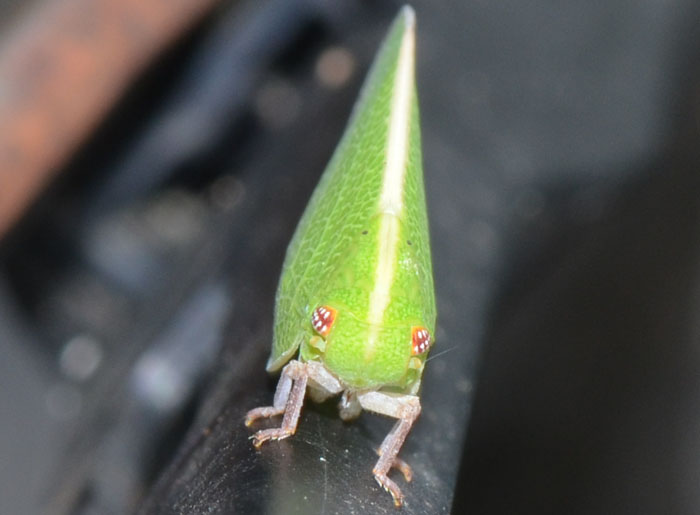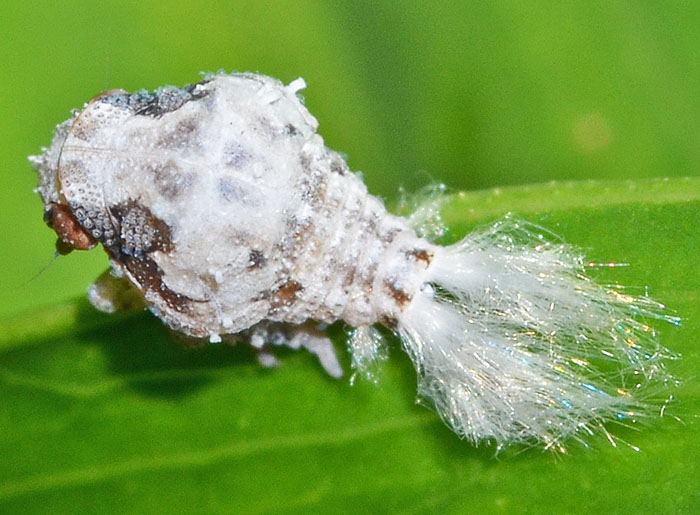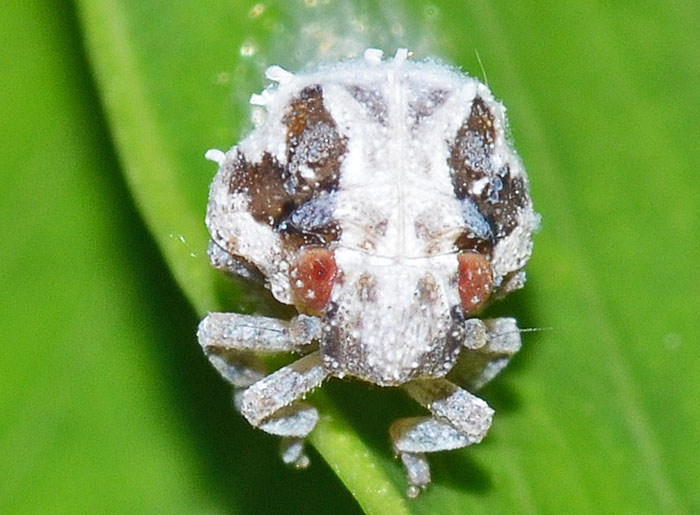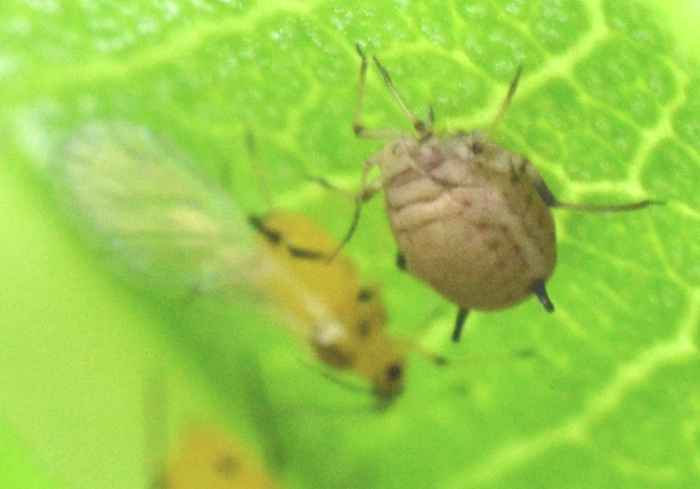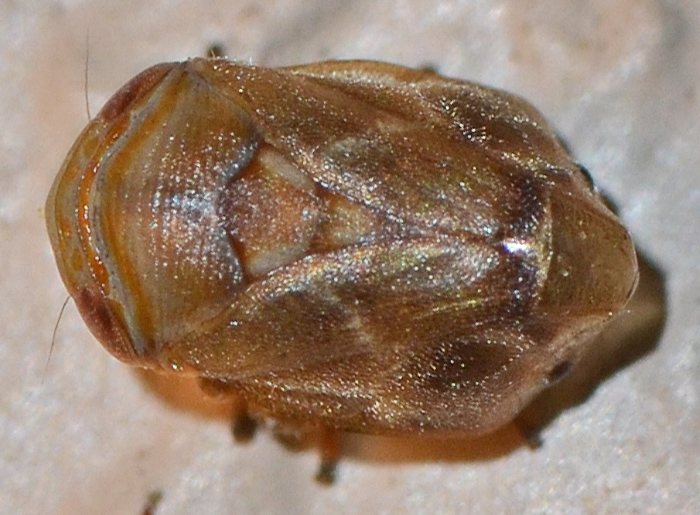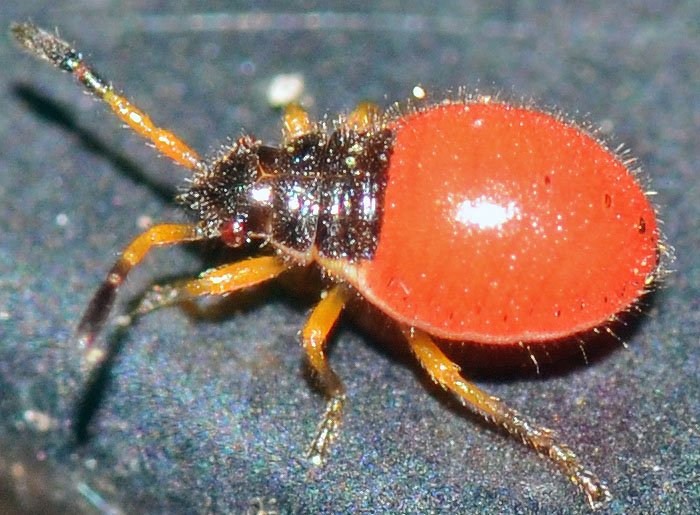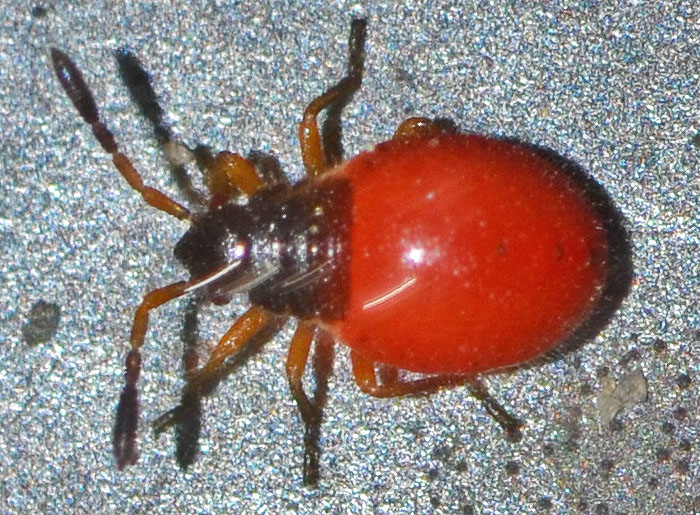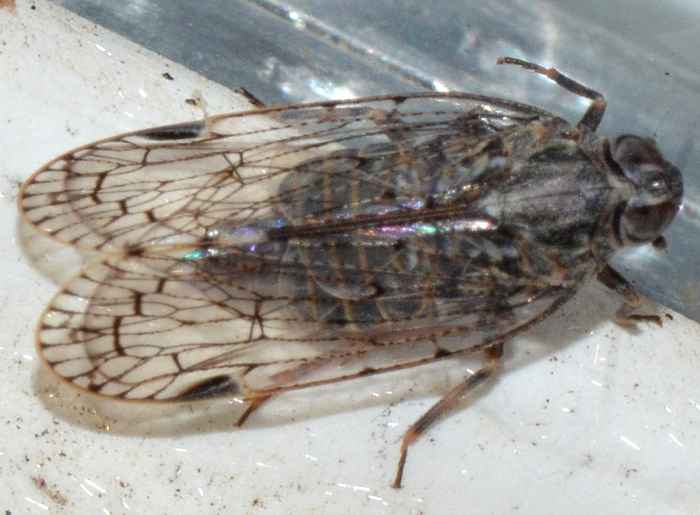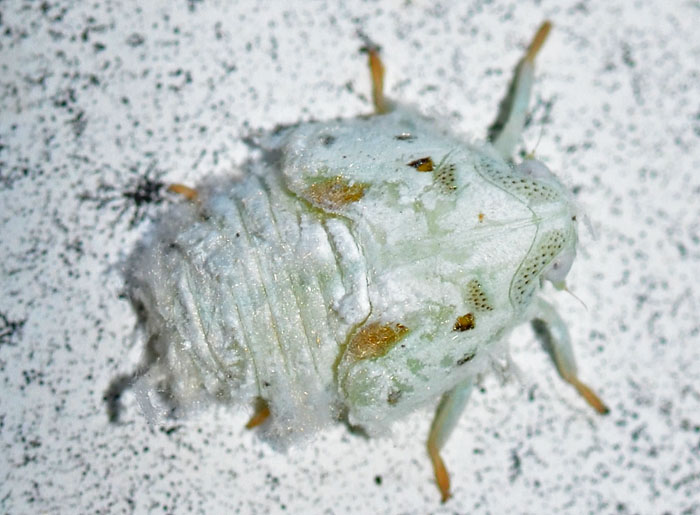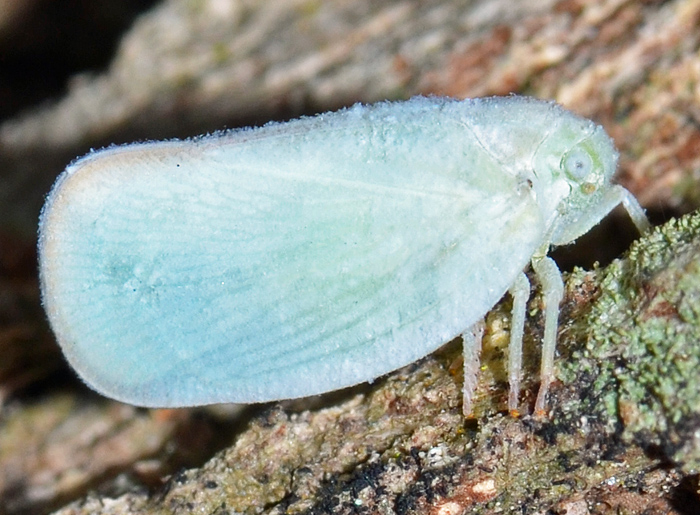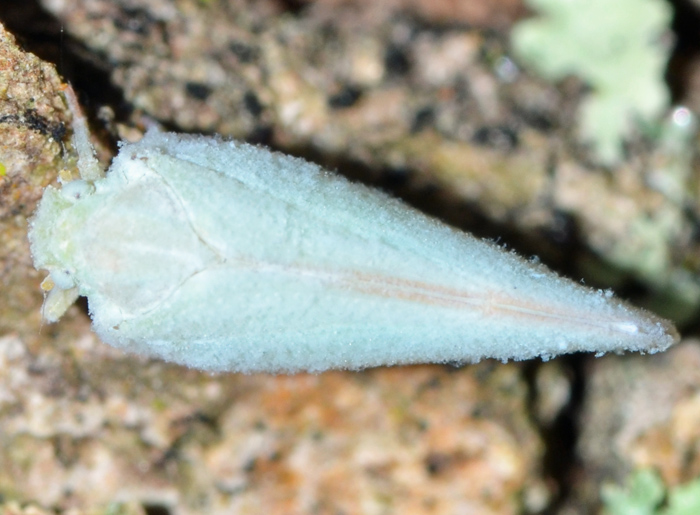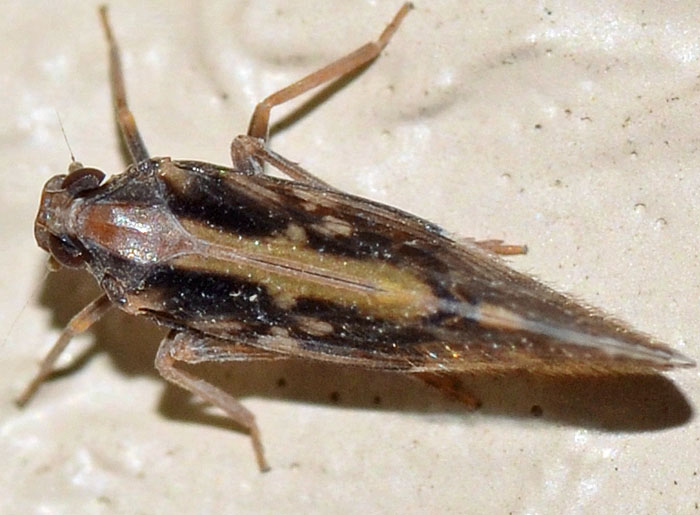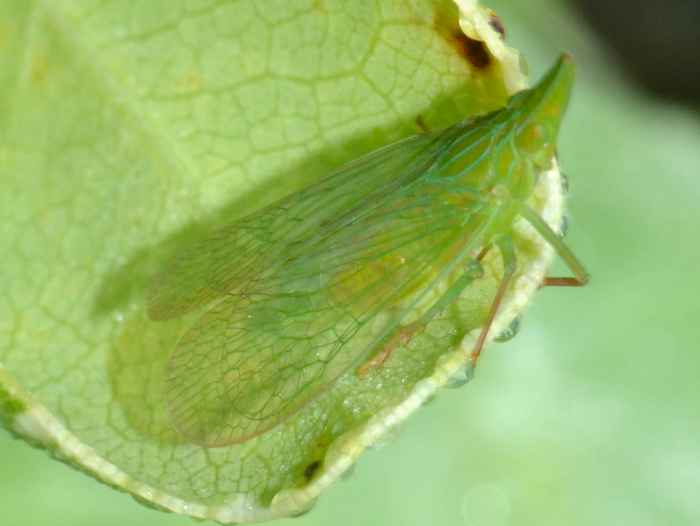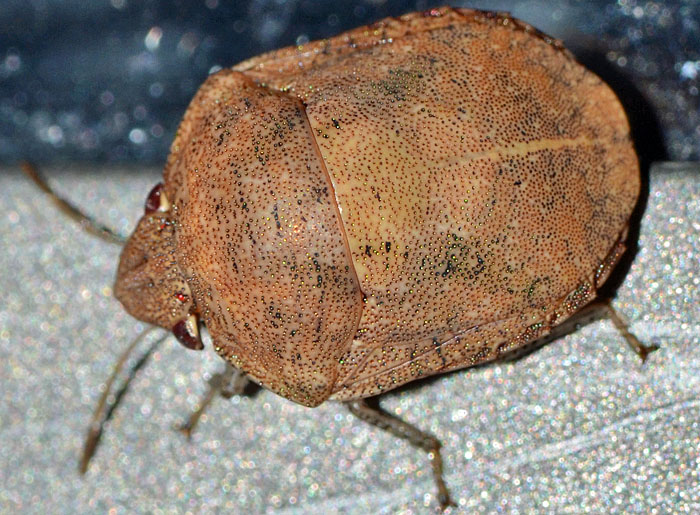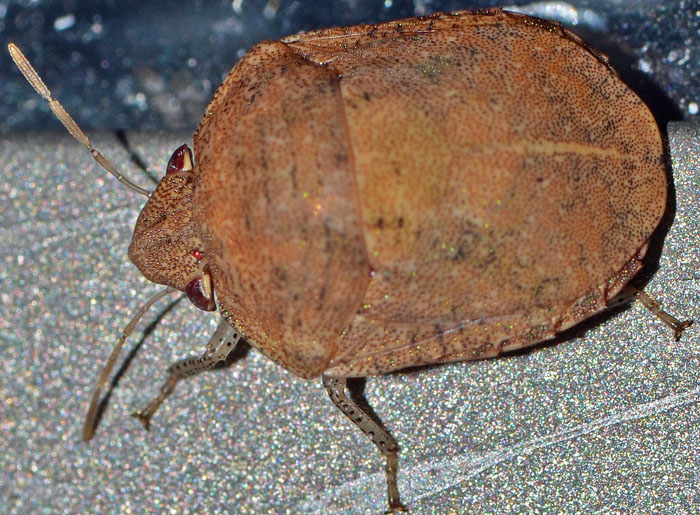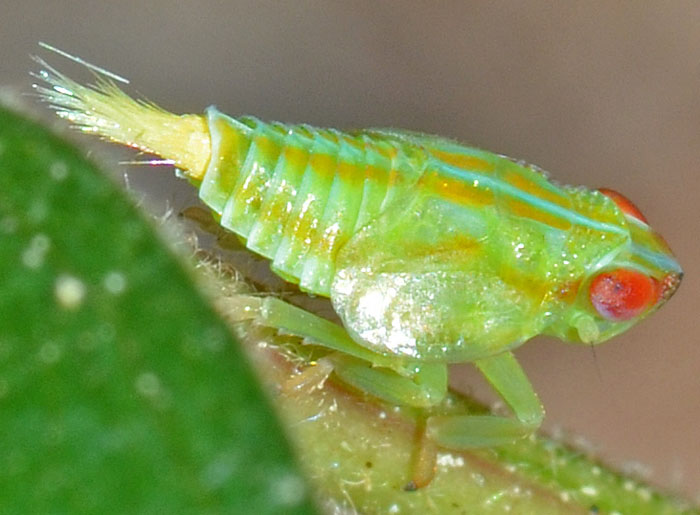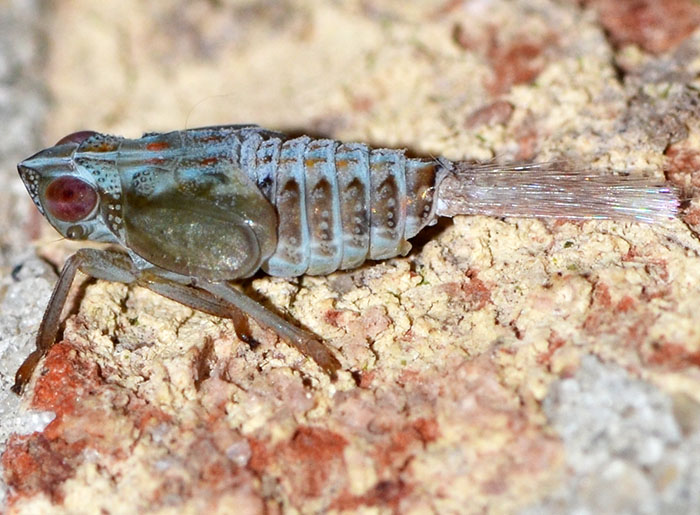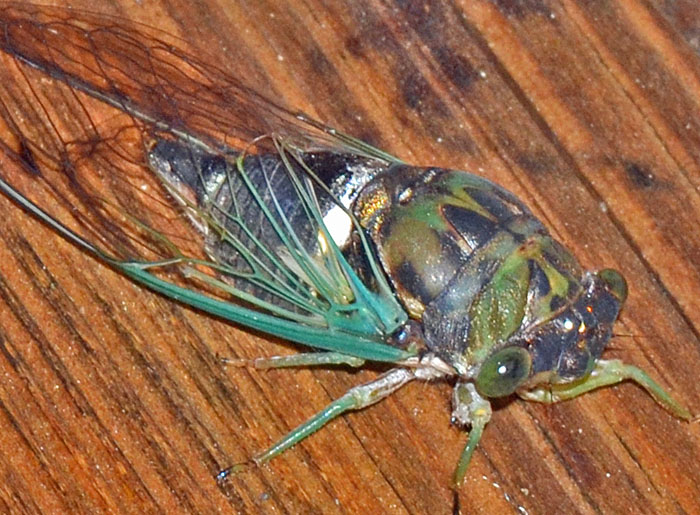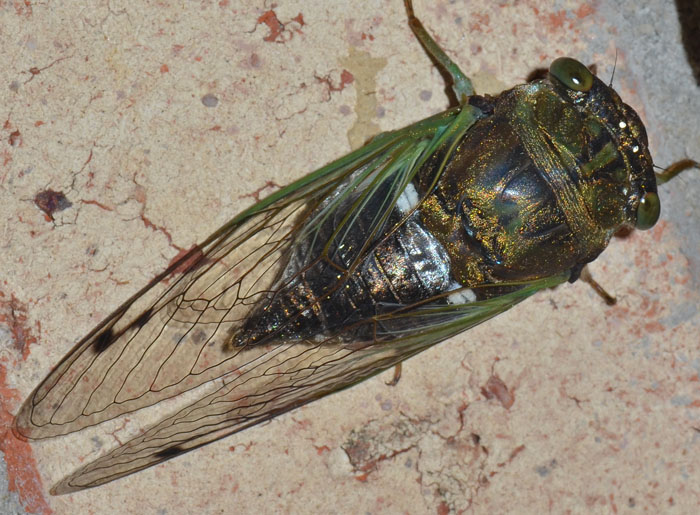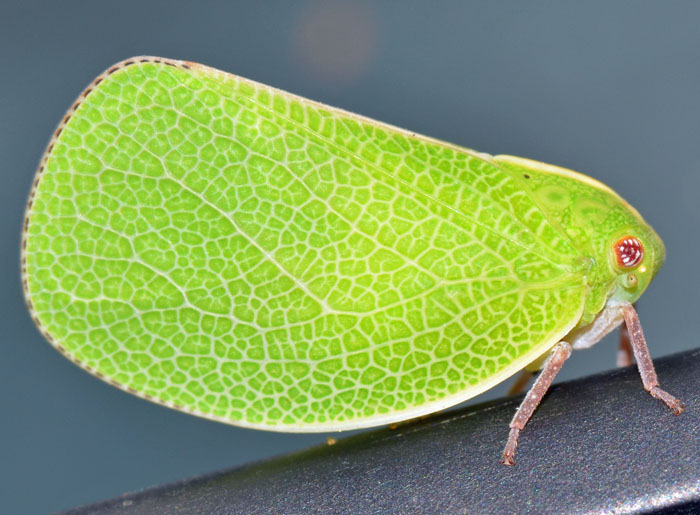 Acanalonia servillei. | In June and July, there were quite a few of these beautiful planthoppers in our yard. This specimen sat on the windshield wiper of my little truck and later handled the 50 mph with no problems. The host plants of this species are seemingly in the caper family ( Capparaceae). A high resolution version of the large photo is available here.
bug guide (these photos): http://bugguide.net/node/view/945004 | ||
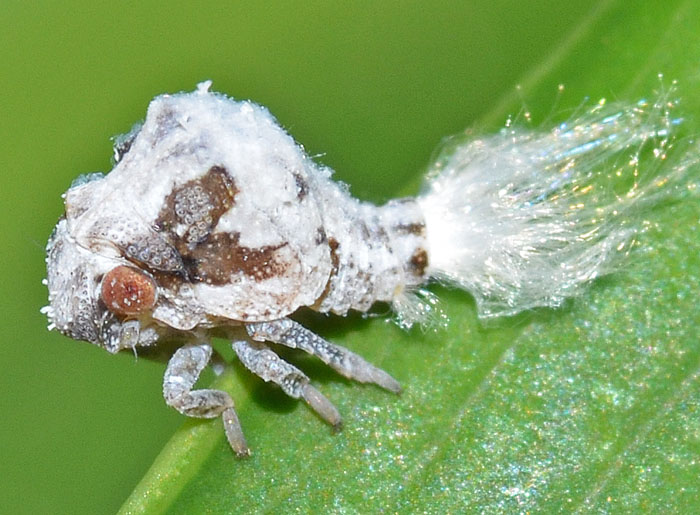 Acanalonia servillei - imm. | Really cool. These nymphs are just amazing. The three photos show the same specimen. A green adult can be seen above.
bug guide (these photos): http://bugguide.net/node/view/1068698 | ||
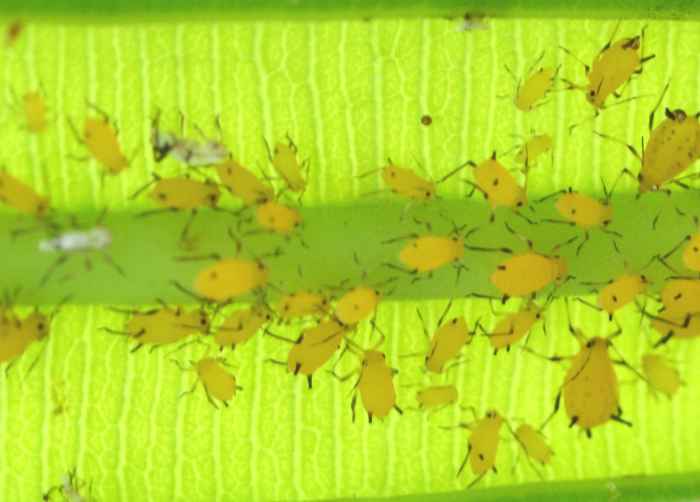 Aphis nerii (Oleander Aphid). | Oleander Aphids (Aphis nerii) feed on the sap of milkweed and oleander leaves. They reproduce without males (parthenogenetic) and tend to give birth to nymphs (not eggs). Some species of ants "farm" aphids. The small photo shows a winged female and a brown mummy that got attacked by a parasitic wasp (not shown).
 A short video is available on my YouTube channel. A short video is available on my YouTube channel.bug guide: http://bugguide.net/node/view/6167 UC Irvine: http://nathistoc.bio.uci.edu/hemipt/OleanderAphid.htm | ||
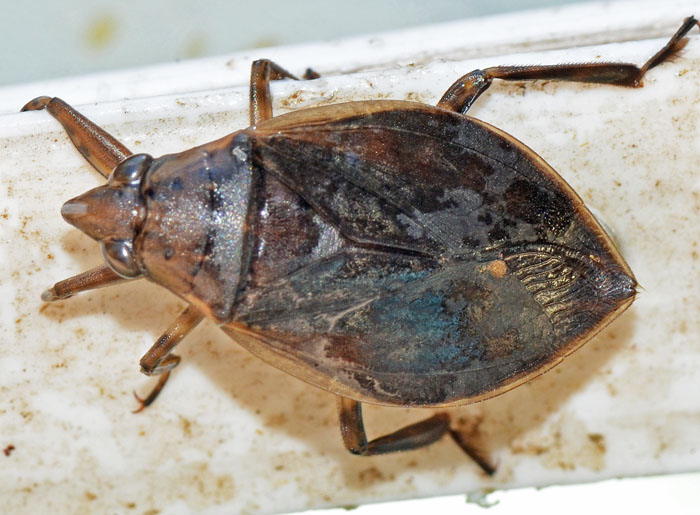 Belostoma sp. (Giant Water Bug). | I found this Giant Water Bug in our swimming pool. I am very happy that I had a chance to take this picture and admire the amazing diving speed of this bug. Unfortunately adults "can inflict a painful bite if handled", which is less cool but explains the alternative name "Toe Biter". Luckily the bugguide also states that they "usually play dead when captured". Females attach their eggs onto the backs of males. They are widespread and have eight species in North America. bug guide (this photo): http://bugguide.net/node/view/999264 | ||
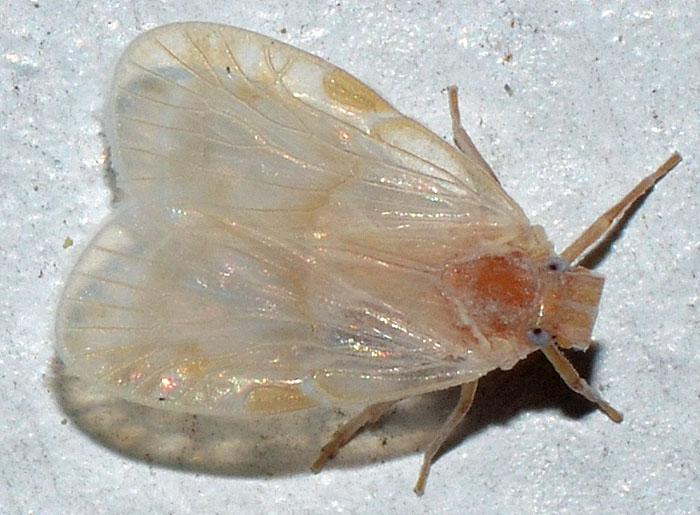 Bothriocera maculata. | Several of these small and unusual planthoppers were attracted by our porch lights. They look surprisingly pale and have a strange, chopped-off head in front of the eyes. Looking at other pictures on the species' bugguide page, it appears that the wing patterns can be darker. The sister species B. cognita has significantly darker wings. bug guide (this photo): http://bugguide.net/node/view/1066547 | ||
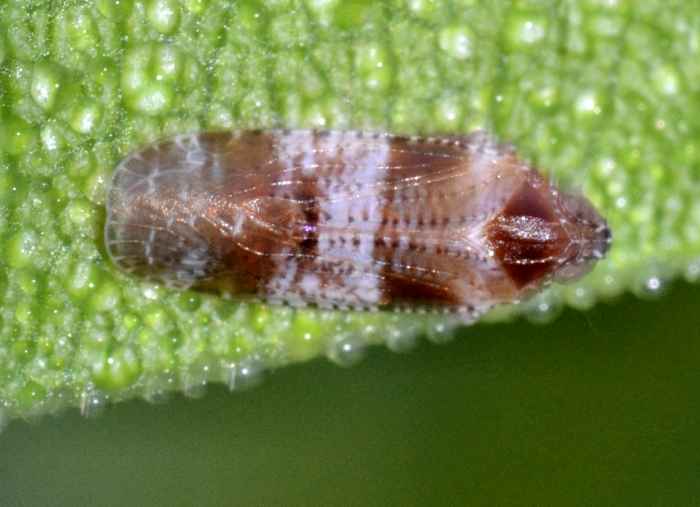 Catonia picta (Achilid Planthopper (nonsp.)). | This small planthopper is Catonia picta. The plant is an oleander. The genus has ten species in North America. I could not find any additional information on this hopper. bug guide (this photo): http://bugguide.net/node/view/566753 | ||
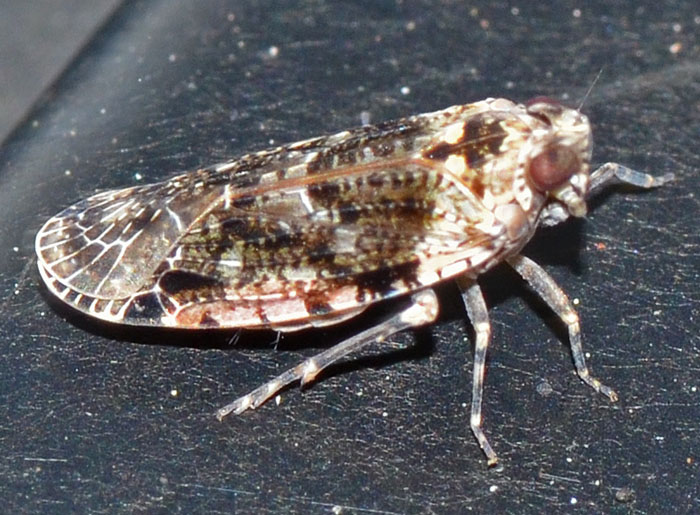 Catonia nava. | I found this bug on my black pick-up truck which is probably not the typical habitat of this planthopper. The species Catonia nava seems to be most abundant in the Southeastern US. bug guide (this photo): http://bugguide.net/node/view/972733 U Delaware: http://tinyurl.com/mtqsv2s | ||
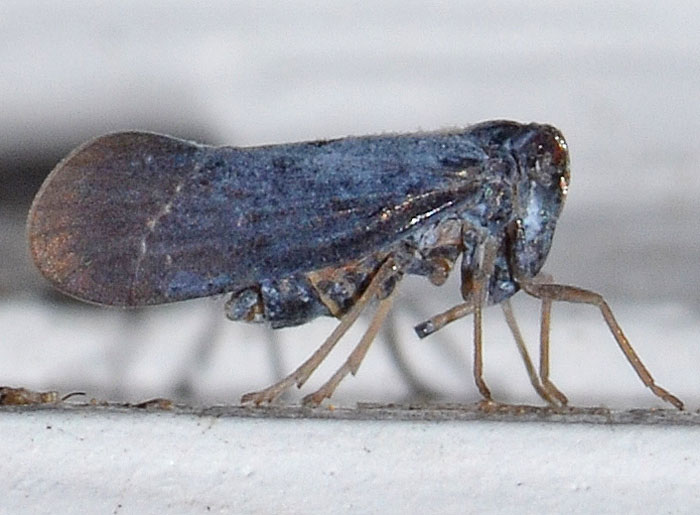 Cedusa sp.. | Of the approximately 180 species in this genus, 33 can be found in North America. The nymphs feed on fungi that develop in leaf litter. bug guide (this photo): http://bugguide.net/node/view/1058845 | ||
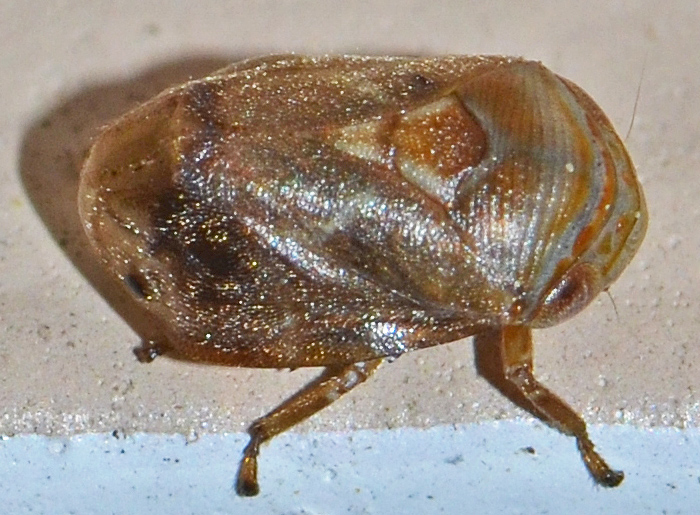 Clastoptera sp.. | This spittlebug genus has over 30 species in North America. My guess for this specimen is C. xanthocephala (Sunflower Spittlebug) which has the right appearance and is by far the dominant species in Florida. They can occur in very great numbers on ragweed. C. xanthocephala is a highly variable species with two "forms", a dark and pale one (seen here).
bug guide (this photo): http://bugguide.net/node/view/1229256 | ||
 Cyarda sp. (Thorn Bug). |
A small thorn bug or planthopper sitting on my mexican petunias which I bought at a Home Depot store earlier that week. Very strange bug. I couldn't find much information about it but it seems to be rather common. Notice the little legs and the eye (!) above the top-most leg. Click on the image to magnify the photo.
This bug belongs to the genus Cyarda which has four species in North America. The "bug guide" lists the species C. melichari and C. walkeri but I can't distinguish them just based on the photos. bug guide (this photo): http://bugguide.net/node/view/535688 | ||
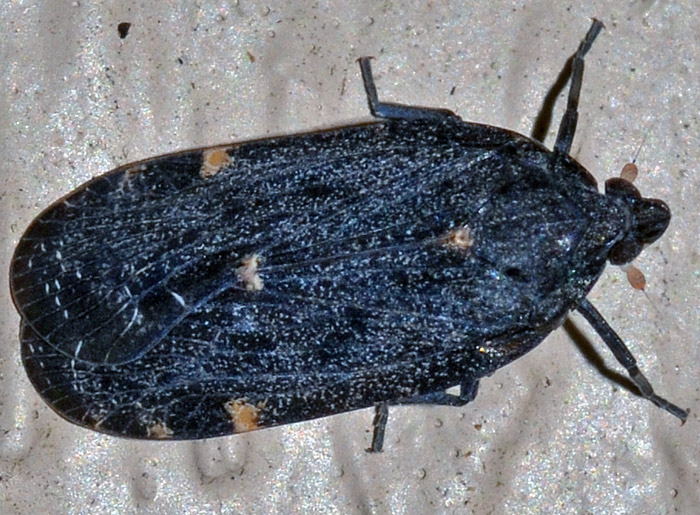 Epiptera opaca. | At first glance, this dark planthopper looked nearly moth-like. The genus has 14 species in North America. Nymphs and adults feed on fungi under bark. bug guide (this photo): http://bugguide.net/node/view/1080368 | ||
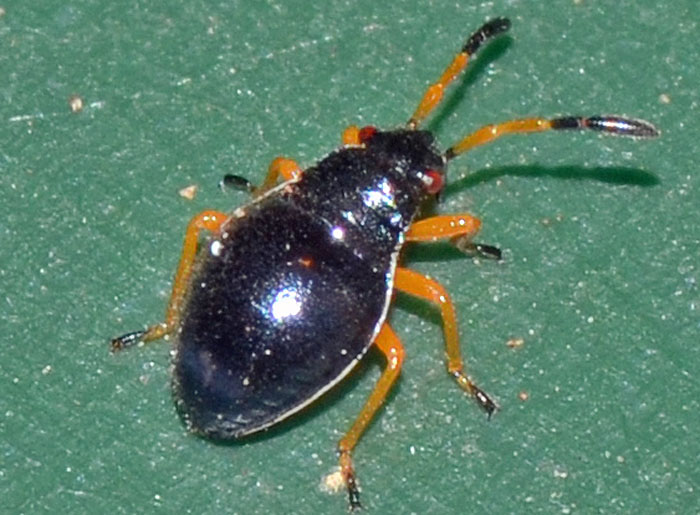 Largus sp. - imm. | A nymph of a Bordered Plant Bug. The genus Largus is under revision. I found this specimen on our canoe and it was way too fast to take a nice photo. The small photos show a specimen of a different species (photos taken on 04/29/18).
bug guide (this photo): http://bugguide.net/node/view/972616 | ||
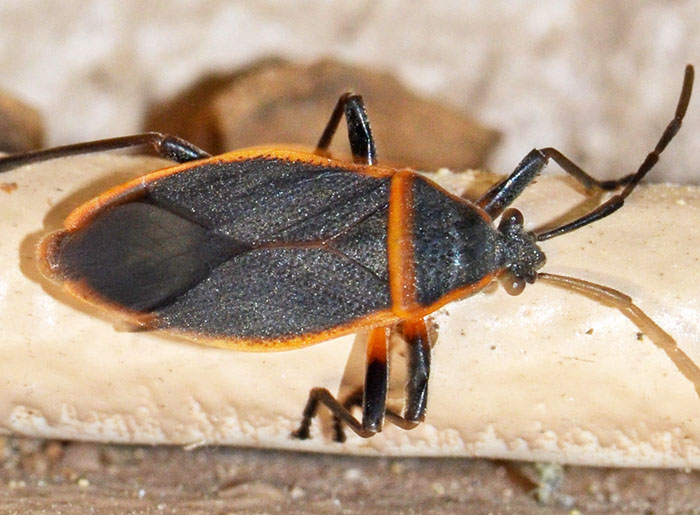 Largus sp.. | Finally, an adult specimen of Largus! I had seen numerous nymphs but it took me a couple of years before I found this one on our house wall. In case you are wondering, it is hugging an old phone or cable cord. My best guess is L. succinctus which is widespread east of the Rockies. bug guide (this photo): https://bugguide.net/node/view/1522002 | ||
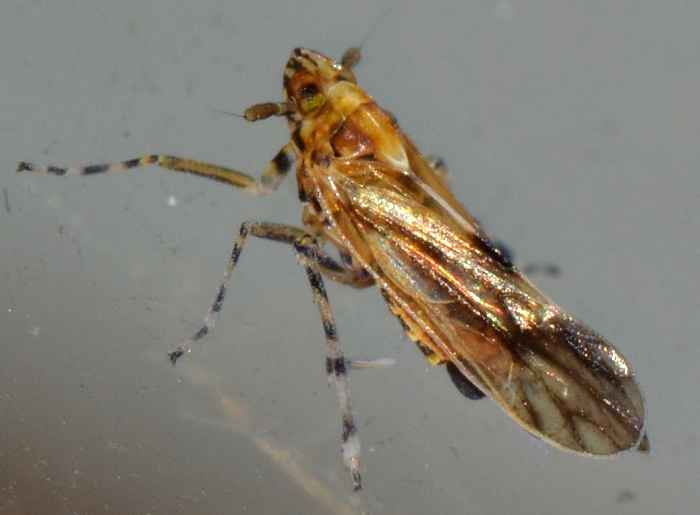 Megamelus palaetus. | The genus has 17 species in North America. Their head is much narrower than the thorax. bug guide (this photo): http://bugguide.net/node/view/684803 | ||
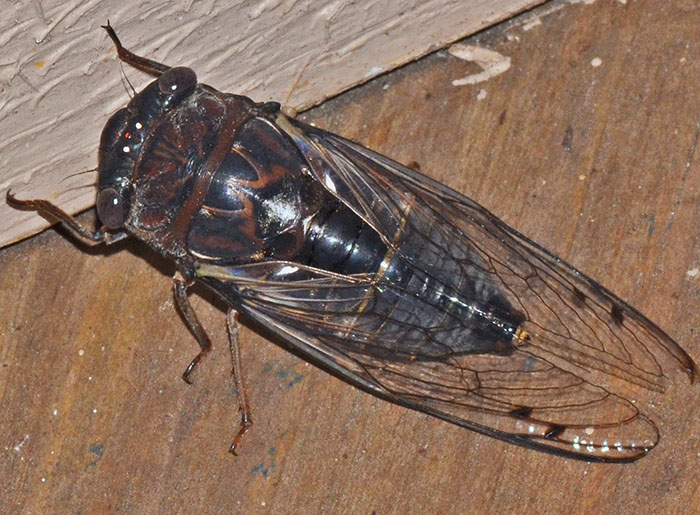 Megatibicen figuratus | I found two of these late-season cicadas on my porch buzzing away and flying against the wall. They are deep reddish-brown or rust-colored with the typical black pattern found on most Tibicen representatives. The second link contains a sound file. bug guide (this photo): http://bugguide.net/node/view/1446042 Cicada Mania: http://www.cicadamania.com/genera/species.php?q=M.+figuratus | ||
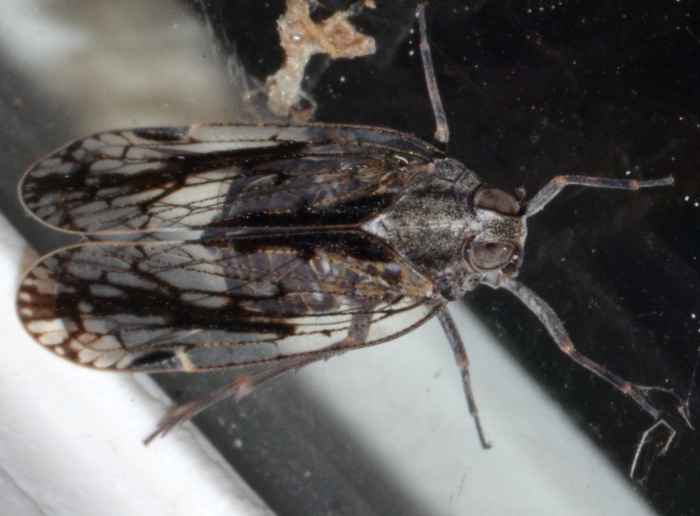 Melanoliarus sp.. | These planthoppers belong to the genus Melanoliarus (formerly Oliarus, which is now considered an Old World genus). I believe the two photos show different species but unfortunately this genus has around 50 different species in North America. Both specimen were attracted to the light of our living room window.
bug guide (large photo): http://bugguide.net/node/view/655867 bug guide (small photo): http://bugguide.net/node/view/655866 | ||
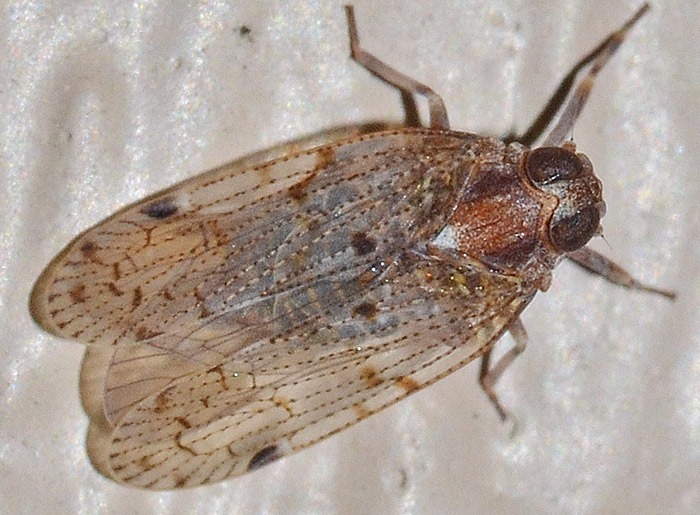 Melanoliarus quinquelineatus or vicarius. | The genus has about 48 species in North America, so I am glad that the experts on bugguide could narrow it down to two. bug guide (this photo): https://bugguide.net/node/view/1080372 | ||
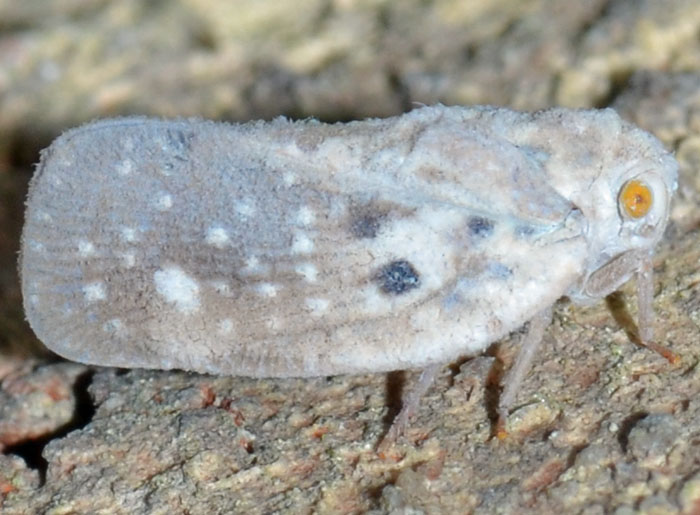 Metcalfa pruinosa (Citrus Flatid Planthopper). | Citrus flatid planthopper (Metcalfa pruinosa) a.k.a. floury mothbug. Despite the name, this bug enjoys a very wide range of host plants and rarely causes damage to crops. I found this one on our house wall. bug guide: http://bugguide.net/node/view/7342 UF: http://edis.ifas.ufl.edu/in605 | ||
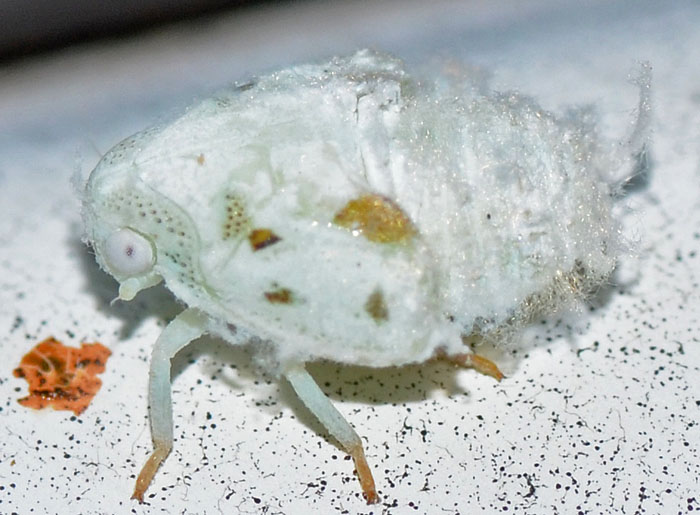 Metcalfa pruinosa (Citrus Flatid Planthopper) - imm. | And here is a nymph of the Citrus Flatid Planthopper. Nymphs are mainly white with tail ends covered with waxy filaments that break of easily. I found this one on my wife's dirty white car. After allowing me to take a few photos, it (the nymph not the car) suddenly jumped away.
bug guide (these photos): http://bugguide.net/node/view/1223494 | ||
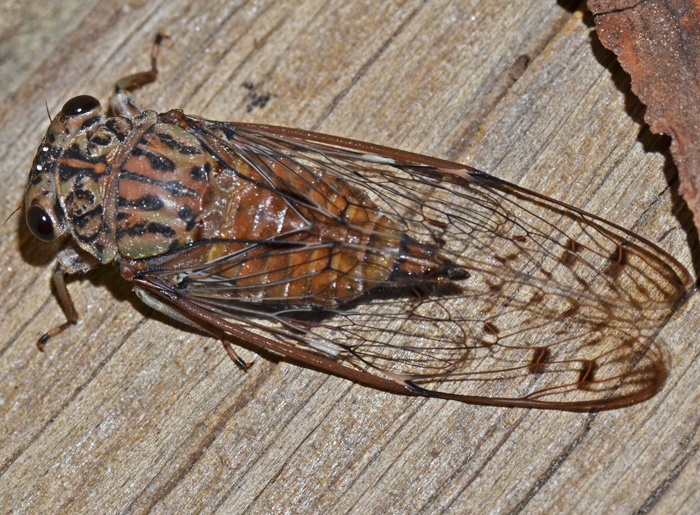 Neocicada hieroglyphica (Hieroglyphic Cicada). | This delicate cicada is called Hieroglyphic Cicada. It is partial to oaks and also the first species to be heard in spring. Its song starts with a sequence of progressively softer, whiney bursts and ends with an even whine. An audio file is available in the third link.
bug guide (this photo): http://bugguide.net/node/view/1236471 UF: http://entnemdept.ufl.edu/creatures/misc/bugs/cicadas.htm the songs of insects: http://songsofinsects.com/cicadas/hieroglyphic-cicada | ||
 Oncopeltus fasciatus (Large Milkweed Bug). | Standing on an oleander leave is a large milkweed bug (Oncopeltus fasciatus). Because it likes to feed on milkweed plants, the bug accumulates toxins which protect it from birds and other predators. They like to hang out in large groups but this one must have lost his buddies. bug guide: http://bugguide.net/node/view/504 | ||
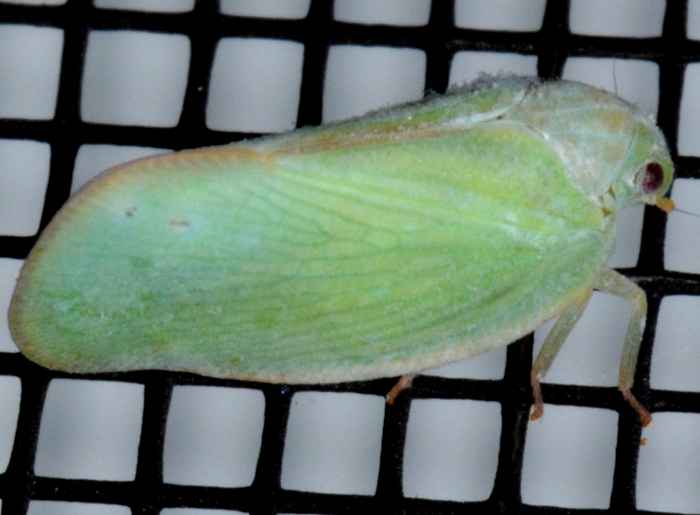 Ormenoides venusta. | Ormenoides venusta can be found in the eastern half of the US and Texas. Here it is the only unmarked flatid. The crossveins on its wings are almost random and the border of the wings is more or less orange in color. The genus has only two species in our area. The small photos were taken on 06/14/14 at 6 pm.
bug guide (this photo): http://bugguide.net/node/view/656429 bug guide (small photos): http://bugguide.net/node/view/938140 | ||
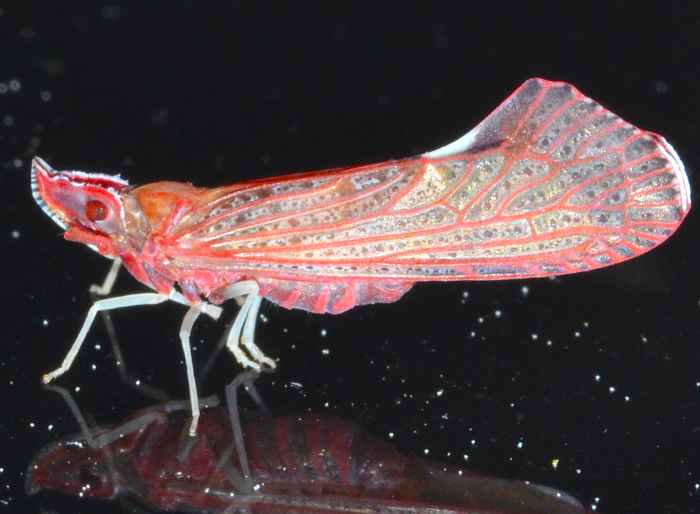 Otiocerus degeeri. | This plant hopper is Otiocerus degeeri. It cannot be confused with any other species. The winged insect has also a strangely twisted antenna base below its eye. bug guide (this photo): http://bugguide.net/node/view/634269 | ||
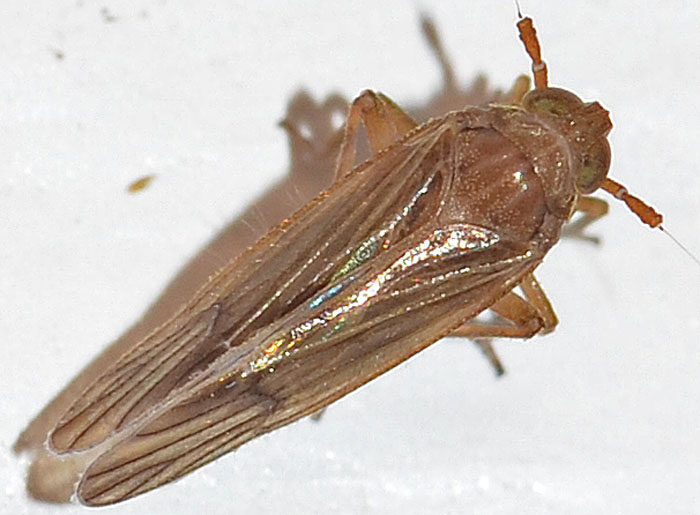 Pareuidella sp.. | The genus Pareuidella comprises five species worldwide, which all can be found in North America. The second link states: "Species in this genus externally strongly resemble some North American members of Euides, and probably females of these genera can not be separated." bug guide (this photo): http://bugguide.net/node/view/985585 U Delaware: http://ag.udel.edu/research/delphacid/species/Pareuidella.htm | ||
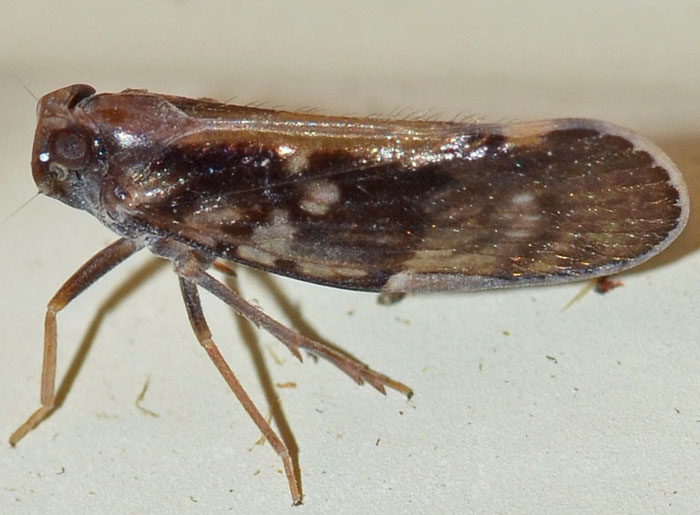 Pintalia delicata. | Pintalia vibex is the most laterally compressed Cixiid planthopper and holds its wings vertically when folded. The species is found in the Southeast and Texas. The small photo shows the same specimen.
bug guide (these photos): http://bugguide.net/node/view/979198 | ||
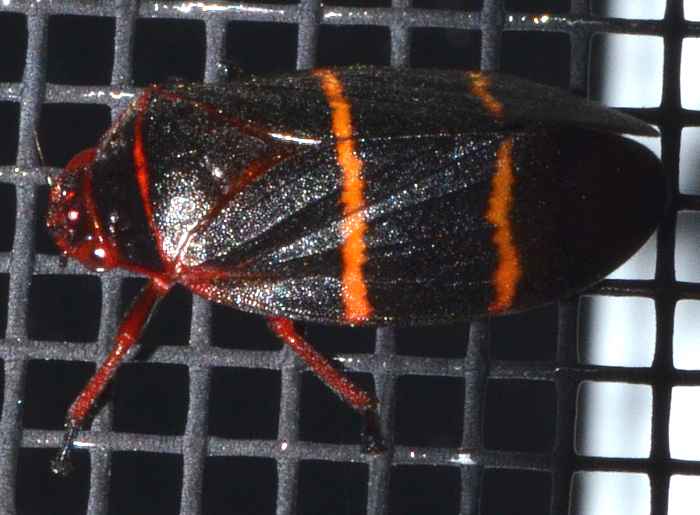 Prosapia bicincta (Two-Lined Spittlebug). | Two-Lined Spittlebugs (Prosapia bicincta) have two characteristic red or orange lines crossing their wings. Also their eyes are red. Nymphs of this species are covered by a foamy secretion product ("spittle"). They feed on grasses and possibly also corn. If threatened, adults can release a smelly substance.
bug guide: http://bugguide.net/node/view/645946 Texas A&M: http://insects.tamu.edu/fieldguide/aimg86.html | ||
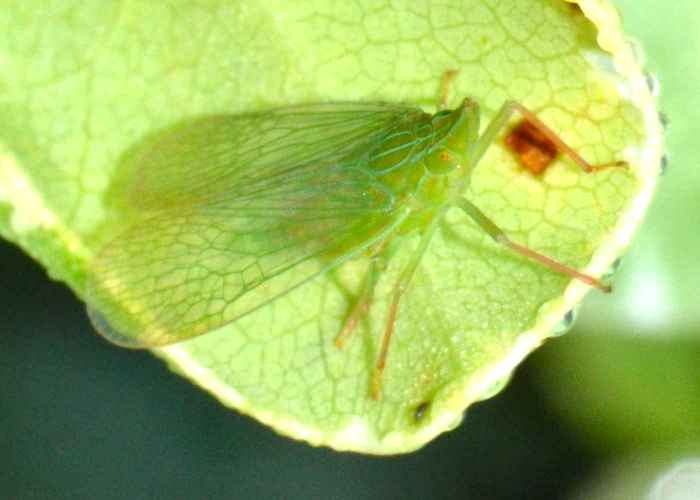 Rhynchomitra microrhina (?). | This planthopper is Rhynchomitra microrhina. Its name refers to its "snout" and "small nose".
bug guide (this photo): http://bugguide.net/node/view/566762 | ||
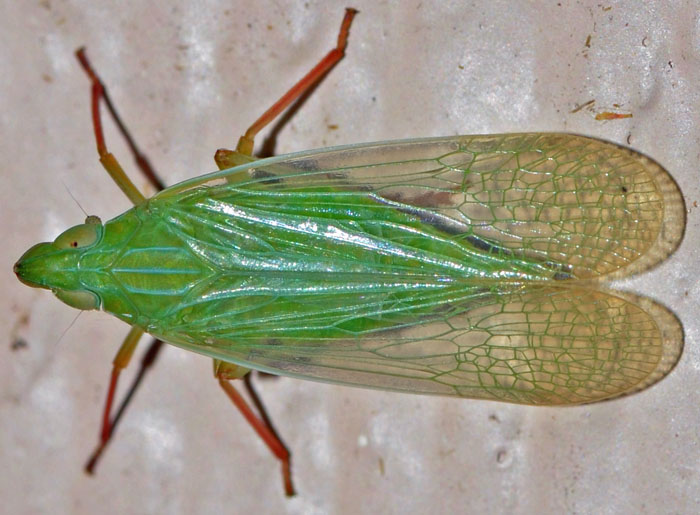 Rhynchomitra lingula. | This fairly large planthopper is most likely Rhynchomitra lingula. The other two, North American species have a more pointy "snout" and narrower heads. This specimen came to our porch light. Known host: saw palmetto. For a high resolution version of the photo click here. bug guide (this photo): http://bugguide.net/node/view/995886 | ||
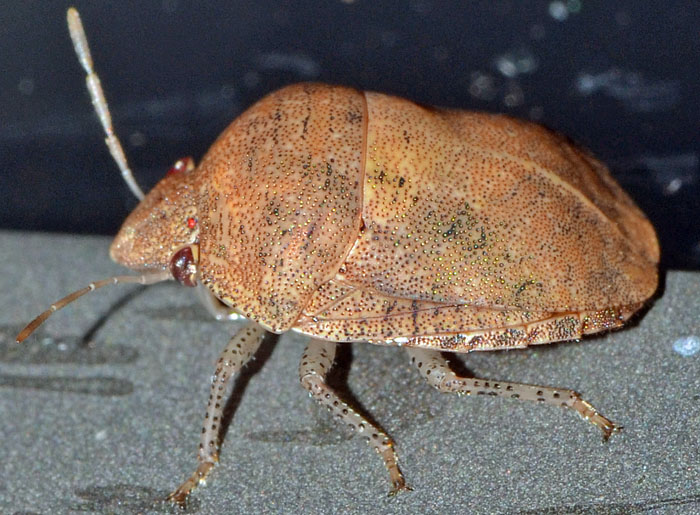 Symphylus caribbeanus. | An expert determined this to be Symphylus caribbeanus but there is some uncertainty here. This species feeds on wax myrtle. It has been referred to earlier as S. obliqua. The genus has only one species in North America. The small photos show the same specimen.
bug guide (these photos): http://bugguide.net/node/view/981742 | ||
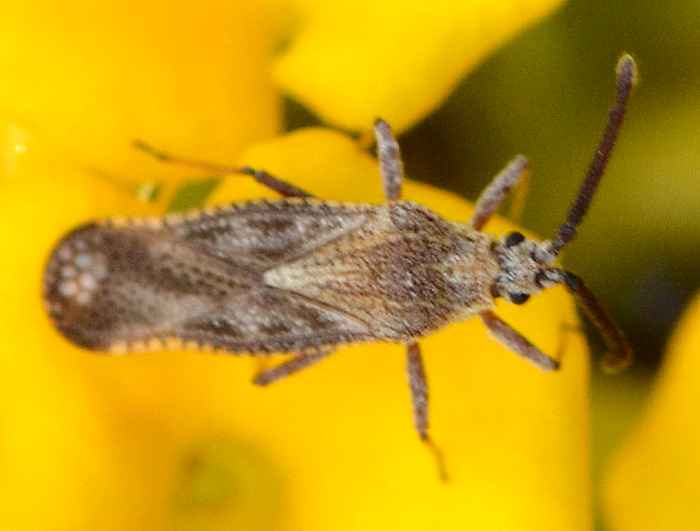 Teleonemia scrupulosa (Lantana Lace Bug). | I found this lace bug on my lantana plants. It's probably Teleonemia scrupulosa which feeds on the undersides of lantana leaves and some other plants. It can cause severe damage to the leaves and is mainly found in the southern states (FL, GA, TX). Natural enemies include assassin bugs. bug guide (this photo): http://bugguide.net/node/view/572056 UF: http://edis.ifas.ufl.edu/in514 | ||
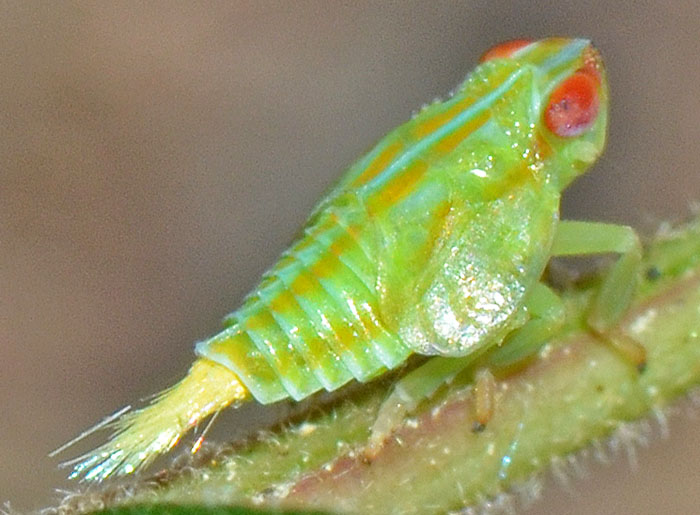 Thionia simplex (?) - imm. | Thionia simplex can be found in the Eastern half of the US. The photos show its amazing nymph that is not only colorful but also the proud owner of an impressive paintbrush-like "tail". This type of tail is characteristic for nymphs in the Issidae family as long as the filaments are straight and bundled, not bushy.
bug guide (these photo): http://bugguide.net/node/view/1068111 | ||
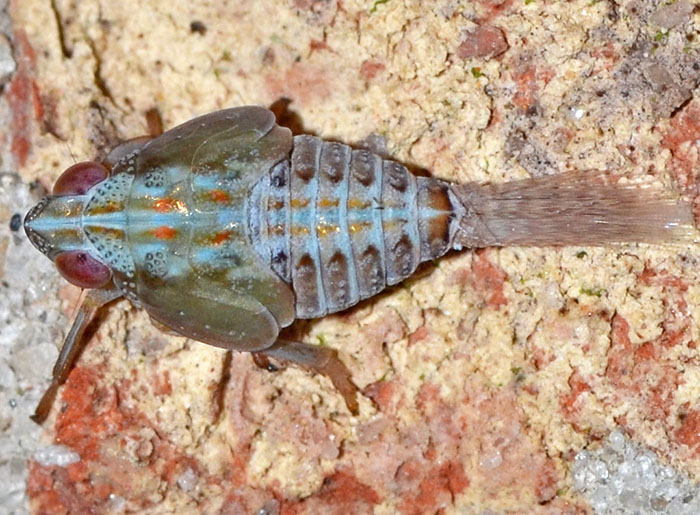 Thionia bullata - imm. | A fairly large (6 mm) nymph of an Issid Planthopper. I am fairly confident that this sharp looking guy belongs to the species Thionia bullata. Its preferred host are pine trees. In the US, Thiona is represented with eight species; worldwide it has about 80. Please click on the photo and enjoy its intricate pattern and perplexing brush.
bug guide (these photos): https://bugguide.net/node/view/1581530 | ||
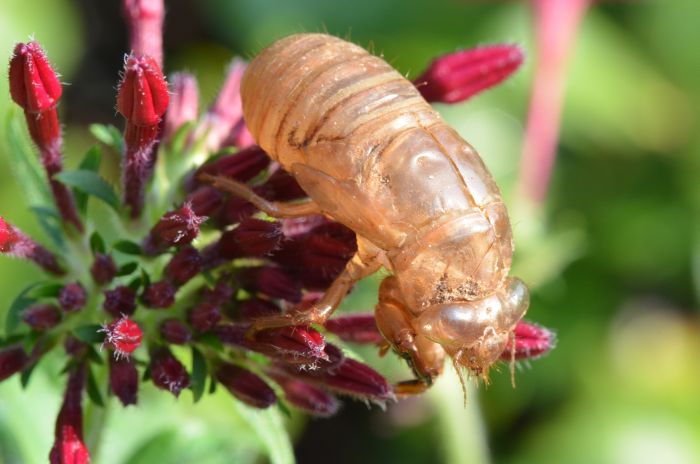 Tibicen davisi (Southern Dog Day Cicada Cast). | Hanging in there ... This cast is likely from the Southern Dog Day Cicada (Tibicen davisi). I can't believe that it picked this spot on top of a flower. The species is very common in the Southeast and closely associated with pine trees. The bug guide expert who assigned the species mentioned Diceroprocta olympusa as another remote possibility. bug guide (this photo): http://bugguide.net/node/view/561613 | ||
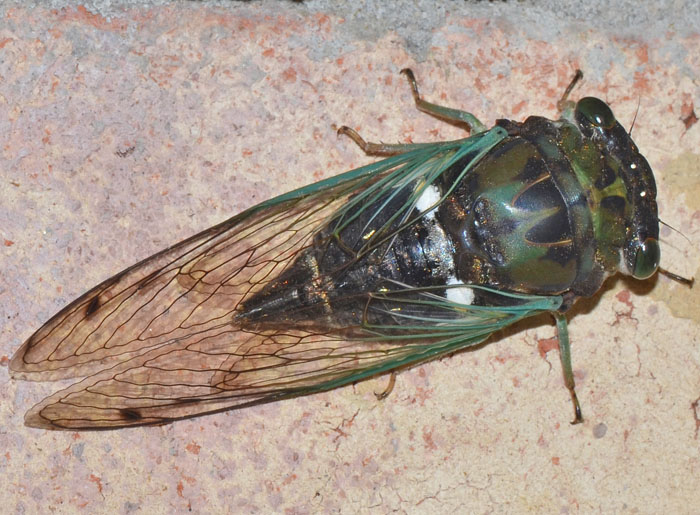 Tibicen tibicen ssp. australis (Southern Swamp Cicada). | A mighty insect! After hearing it fly against the window, my first instinct was to keep a safe distance. This "annual cicada" can be found every year, although their nymphs spend 2-3 years feeding on tree roots. The UF link states that there are 19 different cicada species in Florida. The small photo on the right is a photo of a female (08/28/14). The gold-colored "dusting" suggests that it emerged only hours ago. It is best seen on this high-res version.
bug guide (large photo): http://bugguide.net/node/view/977400 UF: http://entnemdept.ufl.edu/creatures/misc/bugs/cicadas.htm |

